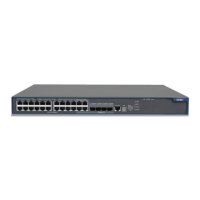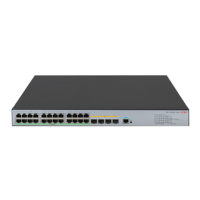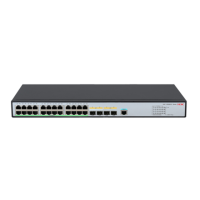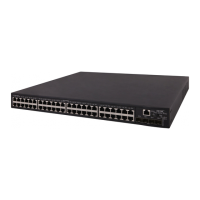287
Ste
Command
Remarks
1. Enter system view.
system-view N/A
2. Enter MLD-snooping view.
mld-snooping N/A
3. Set the 802.1p precedence
for MLD messages.
dot1p-priority priority-number
The default 802.1p precedence for
MLD messages is 0.
Setting the 802.1p precedence for MLD messages in a VLAN
Ste
Command
Remarks
1. Enter system view.
system-view N/A
2. Enter VLAN view.
vlan vlan-id N/A
3. Set the 802.1p precedence
for MLD messages.
mld-snooping dot1p-priority
priority-number
The default 802.1p precedence for
MLD messages is 0.
Configuring an IPv6 multicast user control policy
IPv6 multicast user control policies are configured on access switches to allow only authorized users to
receive requested IPv6 multicast data. This helps restrict users from ordering certain multicast-on-demand
programs.
In practice, a device first needs to perform authentication (for example, 802.1X authentication) for the
connected hosts through a RADIUS server. Then, the device uses the configured multicast user control
policy to perform multicast access control for authenticated users as follows.
• After receiving an MLD report from a host, the access switch matches the IPv6 multicast group
address and multicast source address carried in the report with the configured policies. If a match
is found, the user is allowed to join the multicast group. Otherwise, the join report is dropped by the
access switch.
• After receiving a done message from a host, the access switch matches the IPv6 multicast group
address and source address against the policies. If a match is found, the host is allowed to leave the
group. Otherwise, the done message is dropped by the access switch.
An IPv6 multicast user control policy is functionally similar to an IPv6 multicast group filter. A difference
lies in that a control policy can control both multicast joining and leaving of users based on
authentication and authorization, but a multicast group filter is configured on a port to control only
multicast joining but not leaving of users without authentication or authorization.
To configure a multicast user control policy
Ste
Command
Remarks
1. Enter system view.
system-view N/A
2. Create a user profile and
enter its view.
user-profile profile-name
N/A

